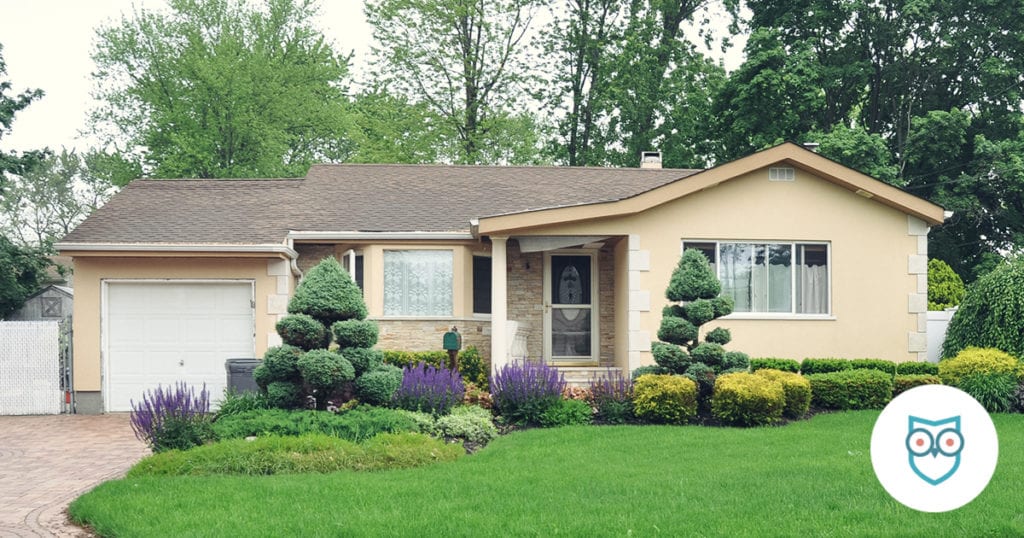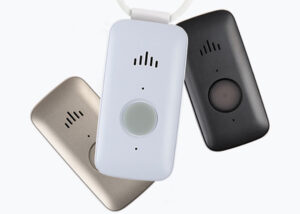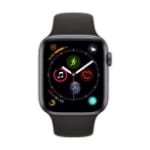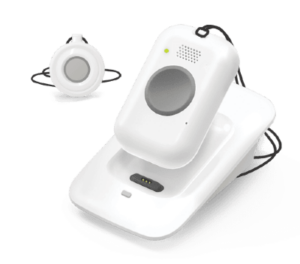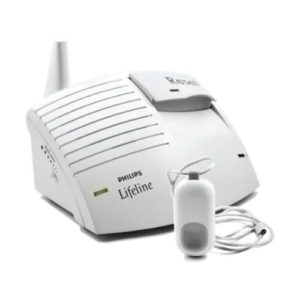Fall detection technology is an important part of a medical alert system, but most companies charge extra for it. To help you decide if you need it, we’ll explain what fall detection is, who benefits most from it, and what options exist.
What Is Fall Detection?
For over 11 years, SafeWise experts have conducted independent research and testing to create unbiased, human reviews. Learn how we test and review.
Fall detection FAQ
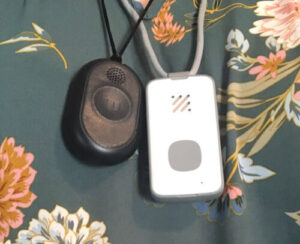
Image: Cathy Habas, SafeWise
Sign up for our free weekly newsletter to get the best safety news, product info, and deals.
By signing up, you agree to our Terms and Conditions and Privacy Policy.
How do fall alert systems work?
Fall alert devices contain a sensor called a triaxial accelerometer, which measures speed, distance, and direction.
The accelerometer is programmed to look for the pattern of movement consistent in most falls: rapid downward acceleration followed by no movement.
What happens next depends on your fall alert system.
If your device is connected to a professional monitoring center, an agent receives the fall alert and starts talking to you through the device’s two-way speaker. If you don’t respond, they’ll dispatch emergency responders to make sure you’re okay.
If your device is not connected to a professional monitoring center, a loved one receives the fall alert. It’s their job to try to reach you or call 911.
How do emergency responders know where to go?
Some fall detection units send GPS data to the monitoring center so that emergency responders know where to find you. Other units are meant to be worn only in the home, so first responders will be sent to your address.
What are some other types of fall detection technology?
Some fall detectors include additional sensors, such as a gyroscope, barometric pressure sensor, or magnetometer. This fall detection technology helps decrease false alarms and accurately detect more types of falls by introducing more data into the equation.
What’s the difference between fall detection and automatic fall detection?
Fall detection and automatic fall detection mean the same thing. The phrase “automatic fall detection” emphasizes the fact that you don’t have to do anything to get help once you’ve fallen. It’s often shortened to “fall detection” because it’s faster to say.
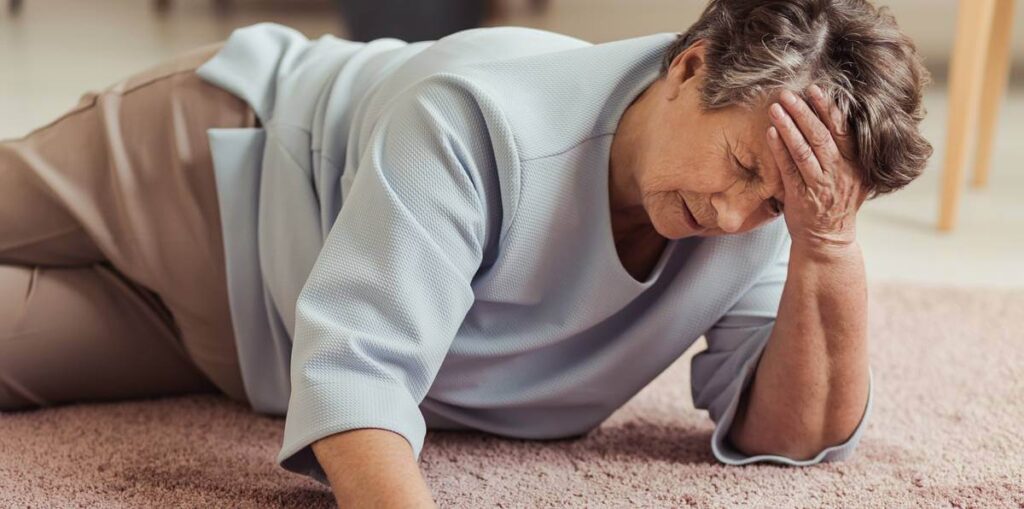
Image: Katarzyna Bialasiewicz, iStock
Is automatic fall detection technology 100% accurate?
No, fall detection systems are never 100% accurate because it’s possible to fall slowly and softly, thus not triggering the device’s sensors. If you can, always push the device’s panic button after you fall to make sure you get help.
If you’re at risk of passing out, consider back-up options like motion sensors (see Aloe Care) or even an indoor security camera so your loved ones can check on you.
What is the best fall detection device?
We consider Medical Guardian's Mini Guardian one of the best fall detection device because its personal emergency response systems are highly customizable, with no contracts or startup fees. Plus, the signal range for most of their devices is among the best in the business. The company offers a variety of plans, all of which can be upgraded with fall detection technology.
What types of falls get detected most often?
Automatic fall detection technology detects high and fast falls more often than low and slow falls.
A “slow fall” happens when you catch yourself on the way down, such as by leaning on a wall and dropping down. A “low fall” occurs when you’re already close to the ground when you fall, such as sliding out of a chair.
Does it matter how I wear or carry my fall detection device?
Yes. Always wear the fall detection device according to the manufacturer’s recommendations.
For example, pendant-style fall detection devices won’t work very well if they’re tucked into your pocket—even a chest pocket. Adjust the cord so the device rests on your sternum to avoid false alarms and promote more accurate fall detection.
What sets off a false alarm with a fall alert system?
Fall alert systems might go off if you get down on the floor. Playing with the grandkids, scrubbing the floor, or reaching under the couch might accidentally send a fall alert signal. Most devices allow you to cancel the false alarm by pressing a button.
Compare the best medical devices for fall detection
Info current of post date. Offers and availability may vary by location and are subject to change. Read full disclaimer.
With an AARP membership, you can get a 15% discount on a Lifeline medical alert system, in addition to discounts on hotels, restaurants, prescriptions and more. You also get the AARP magazine, access to virtual learning programs, and can connect with other AARP members in your community.
Who needs fall detection?
Fall detection systems are marketed toward older adults for a reason: falls are the seventh leading cause of death for people age 65 and older.1,2 Getting help quickly after a fall may reduce the risk of fatality.
But people of any age can benefit from a fall detection device if they take medication that makes them dizzy or have a medical condition that makes them prone to fall or pass out.
Even people who engage in certain extreme sports—like mountain biking, rock climbing, or horseback riding—might want a fall detection device, especially if they tend to venture out on their own.
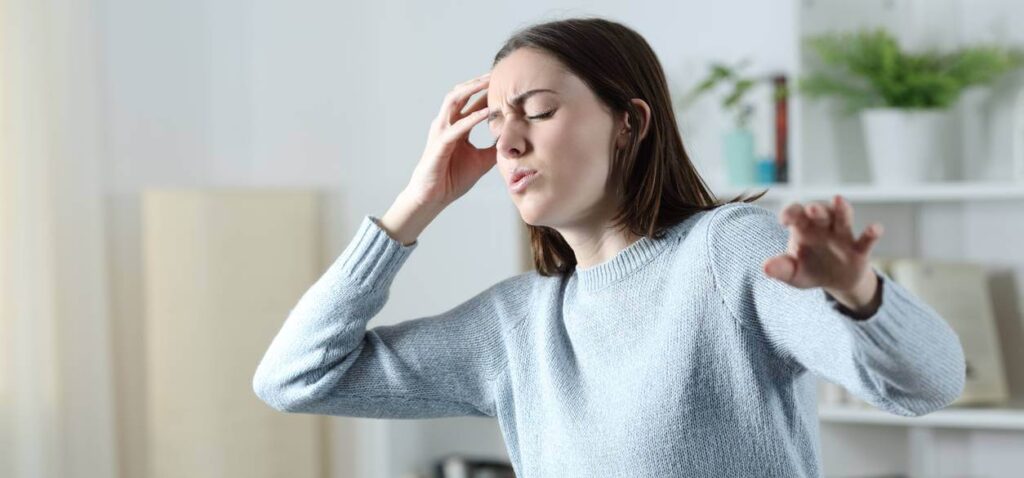
Image: Pheelings Media, iStock
What medical conditions make people more likely to fall?
You’re more likely to fall if you experience a chronic medical condition that causes dizziness, imbalance, loss of consciousness, or decreased tactile and visual sensitivity:3,4,5
- Parkinson’s disease
- Multiple sclerosis
- Stroke
- High blood pressure
- Diabetes
- Panic disorders
- Seizure disorders
- Anemia
- Irregular heartbeat
- Meniere’s disease
- Traumatic brain injury
- Postural hypotension
- Depression
- Foot and toe deformities
- Alzheimer’s disease
Some medications or procedures can also increase the risk of dizziness and falling:3,5,6
- Sedatives
- Benzodiazepines
- Anti-seizure medications
- Antidepressants, especially tricyclic varieties
- Some antihistamines, especially diphenhydramine (Benadryl)
- Overactive-bladder medications
- High-blood-pressure medications
- Cardiovascular medications, such as cardiac glycosides, nitrates, and calcium channel blockers
- Narcotics
- NSAIDs
These aren’t complete lists. Talk to your doctor to find out if you’re at an increased risk of falling.
What are some other risk factors for falls?
According to a report by the World Health Organization, women are more likely to fall than men, but men are more likely to experience fatal falls.5
The same report noted that muscle weakness results in a five-fold increased risk of falling. Weakness in the knees and ankles makes recurrent falls three times more likely, and poor depth perception also results in a three-fold increased risk of falls.
Foot ailments, limited mobility, low body mass index, and cognitive impairment were also named as risk factors for falls.
Environmental factors like trip hazards, poor lighting, and inappropriate footwear also contribute to the likelihood of falls, as does risky behavior like getting on a ladder.7
Where do most falls occur?
Most falls (56%) happen outside the home, and 26% occur inside the home on a level surface. Six percent of falls happen in the shower or bathtub, another 6% occur on stairs inside the home, 3% happen while getting out of bed, and the final 3% are associated with a chair or ladder.5
What kind of fall detection options exist?
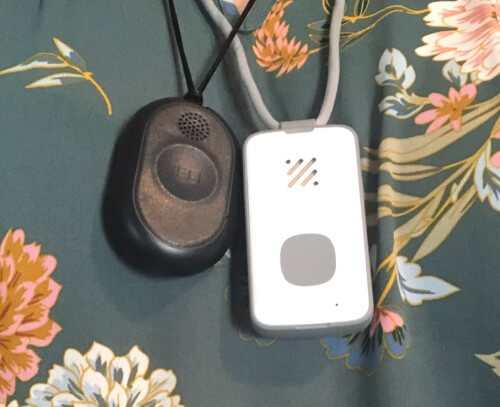
Mobile devices from Bay Alarm Medical (left) and Aloe Care Health (right) can detect falls.
Image: Cathy Habas, SafeWise
Fall detection devices can be worn around the neck or on the wrist. Aloe Care Health is one of the few companies to offer a non-wearable fall detection device—it mounts to the bathroom wall and uses radiofrequency technology to sense your position in the room.
You can get a fall detection device with other senior-specific features built in, or you can get a modern smartwatch that happens to include fall detection, such as the Apple Watch SE.
How much does fall detection cost
Expect to pay anywhere from around $18 to $70 per month for fall detection. Some medical alert companies let you lease fall detection devices for free. Otherwise, budget at least $150 for the device.
What kind of fall detection options exist for kids?
The Angel Watch Series R is the only kids smartwatch with fall detection.
Which Apple Watch has fall detection?
Starting with the Series 4, every Apple Watch has fall detection. Make sure it’s toggled on in the settings menu. We explain how to do that in our Apple Watch review.
Which FitBit has fall detection?
No FitBit device currently offers fall detection.
What are some other watches with fall detection?
Samsung Galaxy watches have fall detection starting with the Galaxy 3.
A few Garmin watches offer “incident detection,” such as the Forerunner 645 Music, the fēnix 5 Plus, and the Vivoactive 3 Music.
Senior-specific watches with fall detection include the Lively Wearable 2, BellPal, Kanega Watch, and Angel Watch Series R - Assist.
Does my medical alert pendant have fall detection?
Not necessarily. Most medical alert companies charge extra to add fall detection to their in-home panic pendants. Contact your medical alert company for clarification.
Can I wear my fall detection device in the shower?
In most cases, yes, you can wear fall detection devices in the shower. Double-check the user manual to be sure.
If your device is a smartwatch like the Apple Watch, try not to expose it to too much soap, which can eat away at the waterproof lining. Rinse it well.
What if I forget to wear my fall alert device?
Have a back-up plan. We recommend a medical alert system with wall buttons positioned in high-risk areas, such as at the bottom of stairs, within reach of the bathtub, or near the bed. It’s also a good idea to schedule regular check-in calls with your loved ones—they’ll know to come over if you don’t answer.
Sources
- Centers for Disease Control and Prevention, “10 Leading Causes of Death by Age Group, United States - 2018.” Accessed January 18, 2022.
- Centers for Disease Control and Prevention, “10 Leading Causes of Injury Deaths by Age Group Highlighting Unintentional Injury Deaths, United States - 2018.” Accessed January 18, 2022.
- Mayo Clinic, “Dizziness,” October 2020. Accessed January 18, 2022.
- National Institute on Aging, “Balance Problems and Disorders,” May 2017. Accessed January 18, 2022.
- Sachiyo Yoshida, World Health Organization, “A Global Report on Falls Prevention, Epidemiology of Falls.” Accessed January 18, 2022.
- Harvard Health Publishing, “Medications That Increase Your Risk of Falling,” November 2021. Accessed January 18, 2022.
- Centers for Disease Control and Prevention, “Important Facts About Falls,” February 2017. Accessed January 18, 2022.
Recent Articles



